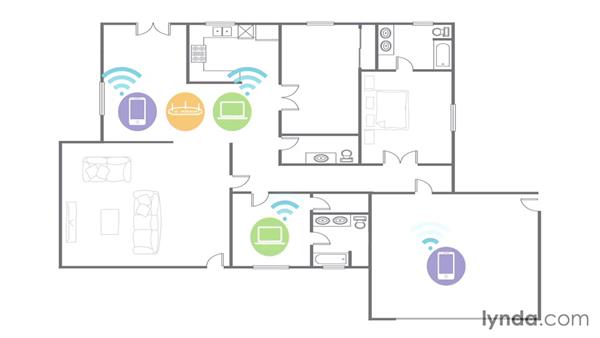
The age of wireless has allowed us to be blessed with the Internet in any room in our homes. But, some places in your home will get a slower connection than others. Checking your network speed is a great way to see how your network performs through your home. If you experience slowdowns in certain areas, a booster or MESH system may help secure a better signal. However, sometimes, the best solutions are the easiest. In today’s post, we want to discuss router placement.
Does Where My Router Is Matter?
Yes, your router placement can directly impact the quality of signal you have. WiFi doesn’t travel far, especially when concrete and metal are added to the mix. Even if you have standard walls, bookshelves, dressers, and other furniture can disrupt the signal. If you find that one end of your house has an excellent signal, but the opposite end doesn’t, your router might not be located in the ideal place.
Optimal Placement
You may have read that placing your router in the center of your home is the most optimal position for it. If you’re you live in a single floor home, placing your router in the middle of the house may provide more coverage in your garage, instead of an area where you need it. This is because the broadcast will be in the shape of a circle, with your router in the middle. If your router is near certain appliances like microwaves, you may also experience signal interference. Consider what devices require a WiFi signal, where you use them, and center the router to that location.
Multiple Floors
If you live in a multi-story home, another important consideration is what floor requires a reliable connection. Think of the WiFi signal as a sphere, with the router in the center. If you have equal demands on both floors, there are two efficient placement options: the floor or ceiling. By mounting the router on the ceiling of the first floor or the floor on the second, you will have the best coverage throughout your home. Remember not to block your router by furniture.
Separate Your Router & Modem
Now you might be thinking, you have limited cable connections in your home, and as a result, your router might not be optimally placed. This can be especially true if you are using your ISPs equipment. Most of the time, the ISPs equipment will be a modem/ router combination. By purchasing a separate WiFi router, you will have more flexibility in your router placement. You will need a longer ethernet cable for this to work.
Purchasing a third party router has other benefits. Firstly, newer routers will broadcast a 2.4GHz and a 5GHz signal. 5GHz broadcasts are more concentrated but don’t go as far. Additionally, third party routers often are packed with features that your ISP equipment will not have, like connection geofencing, the ability to see what devices are on the network, and more.
If you have questions about your network and getting the most out of it, give Computer Warriors a call! We have onsite technicians who can come out and complete a full network evaluation. Once complete, we can identify ways to improve your connection throughout your home.
If you found this article interesting or helpful, check out our other posts!
